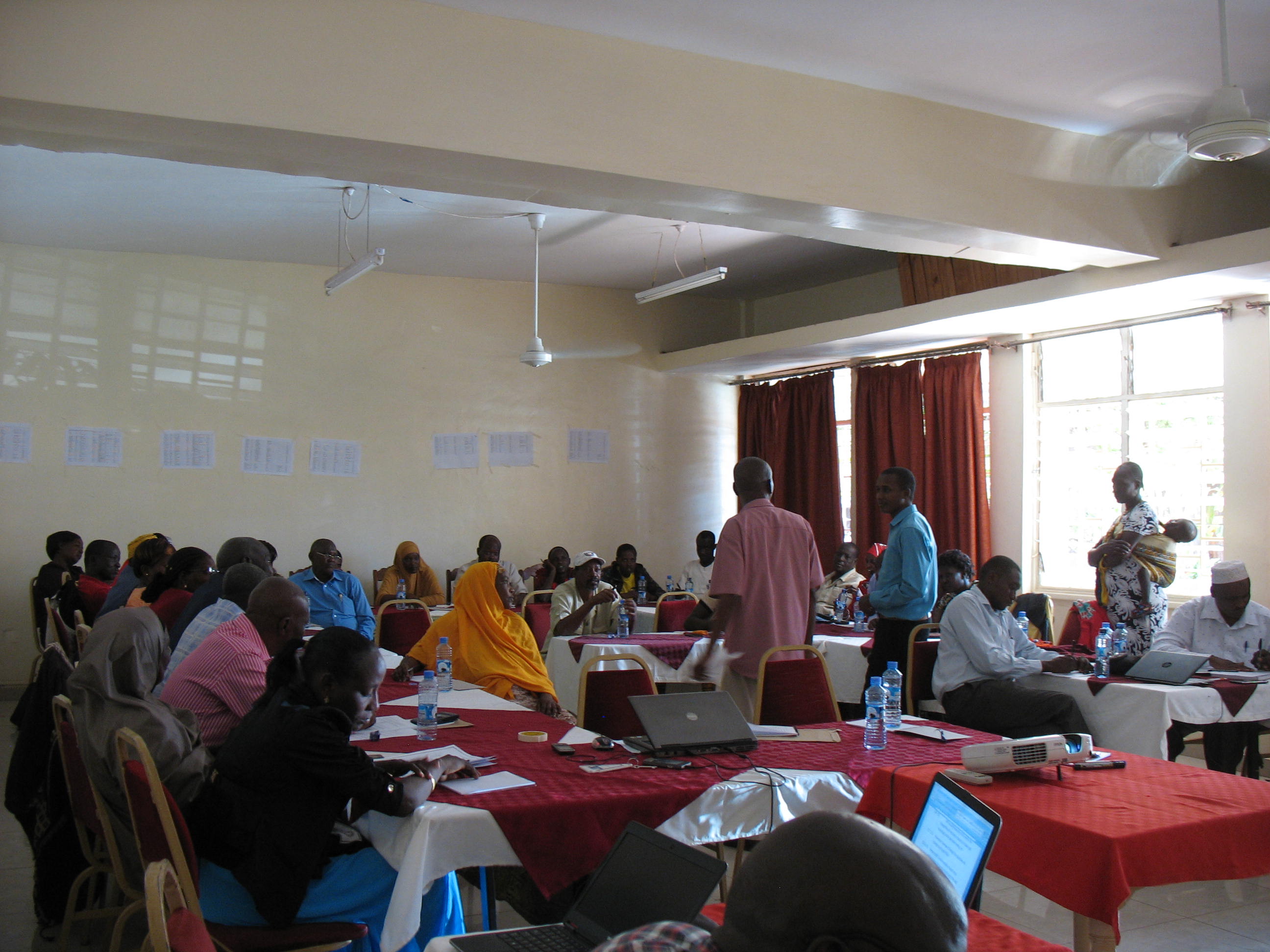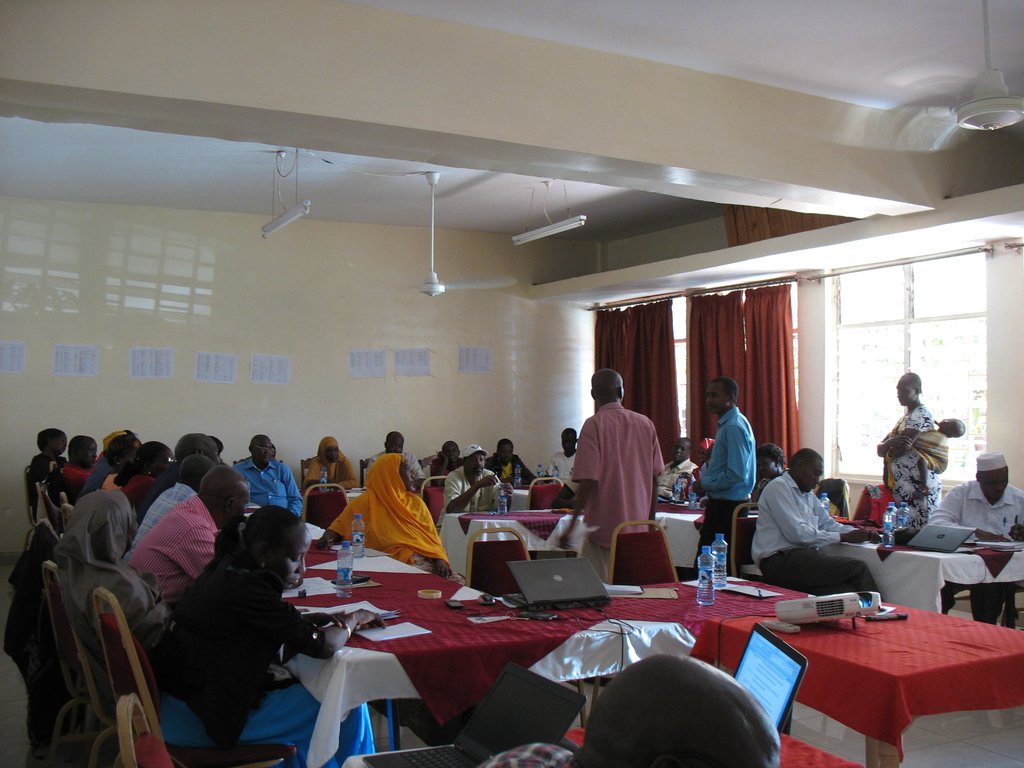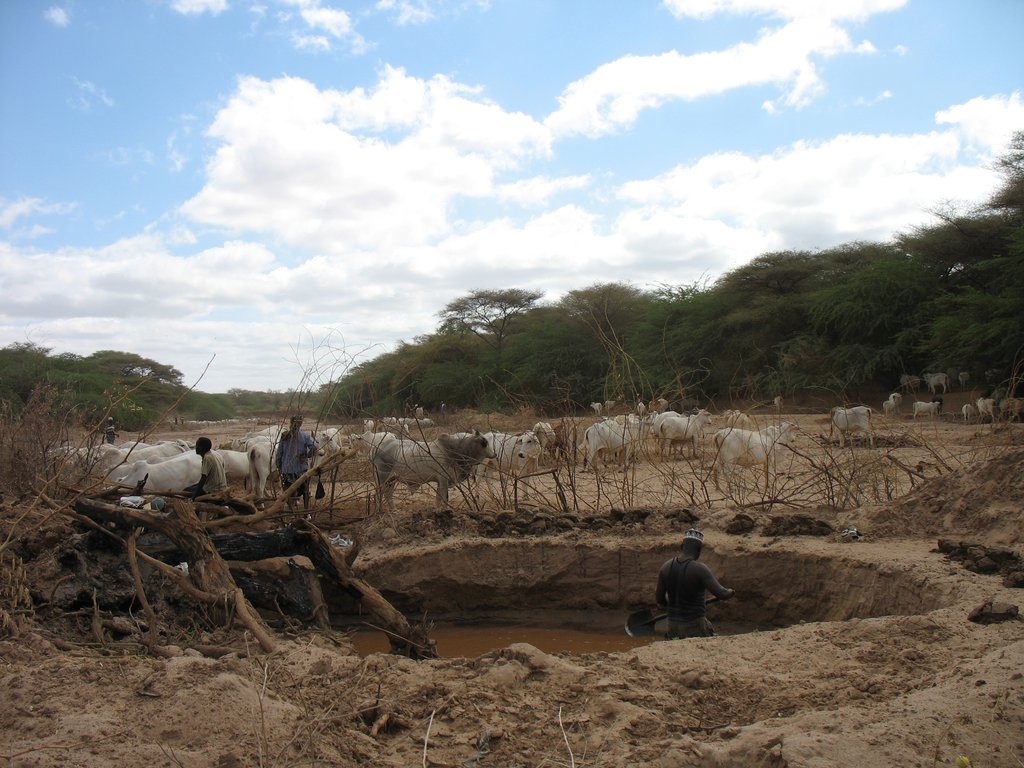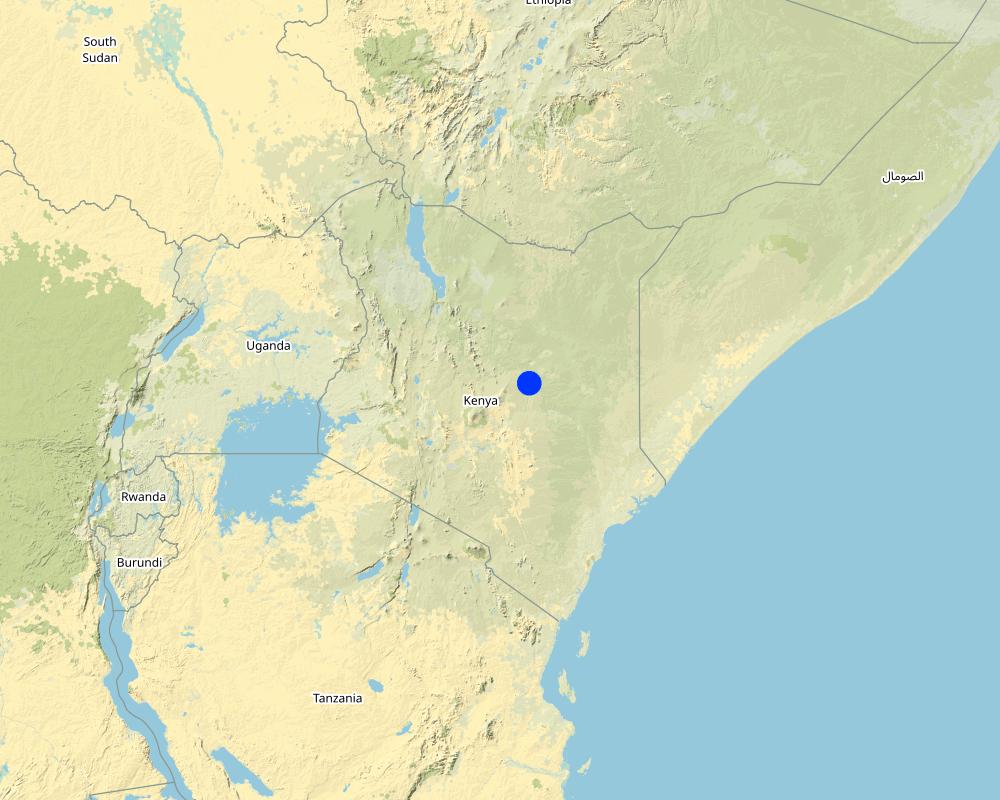Inclusive strategic planning for water, energy and climate change in the rangelands [Kenya]
- Creation:
- Update:
- Compiler: IBRAHIM JARSO
- Editor: Caroline King-Okumu
- Reviewers: Hanspeter Liniger, Rima Mekdaschi Studer, Donia Mühlematter, Joana Eichenberger
Devolved strategic planning
approaches_3441 - Kenya
- Full summary as PDF
- Full summary as PDF for print
- Full summary in the browser
- Full summary (unformatted)
- Inclusive strategic planning for water, energy and climate change in the rangelands: July 31, 2018 (inactive)
- Inclusive strategic planning for water, energy and climate change in the rangelands: Aug. 17, 2018 (inactive)
- Inclusive strategic planning for water, energy and climate change in the rangelands: Aug. 17, 2018 (inactive)
- Inclusive strategic planning for water, energy and climate change in the rangelands: Sept. 3, 2018 (inactive)
- Inclusive strategic planning for water, energy and climate change in the rangelands: May 13, 2018 (inactive)
- Inclusive strategic planning for water, energy and climate change in the rangelands: Nov. 2, 2021 (public)
- Inclusive strategic planning for water, energy and climate change in the rangelands: May 22, 2018 (inactive)
- Inclusive strategic planning for water, energy and climate change in the rangelands: May 13, 2018 (inactive)
View sections
Expand all Collapse all1. General information
1.2 Contact details of resource persons and institutions involved in the assessment and documentation of the Approach
SLM specialist:
Name of project which facilitated the documentation/ evaluation of the Approach (if relevant)
Strengthening Adaptation and Resilience to Climate Change in Kenya Plus (StARCK+)Name of project which facilitated the documentation/ evaluation of the Approach (if relevant)
Book project: Guidelines to Rangeland Management in Sub-Saharan Africa (Rangeland Management)Name of the institution(s) which facilitated the documentation/ evaluation of the Approach (if relevant)
Resource Advocacy Programme (RAP) - Kenya1.3 Conditions regarding the use of data documented through WOCAT
When were the data compiled (in the field)?
22/01/2018
The compiler and key resource person(s) accept the conditions regarding the use of data documented through WOCAT:
Yes
2. Description of the SLM Approach
2.1 Short description of the Approach
Inclusive strategic planning for water, energy and climate change in the rangelands at county, sub-county, ward and location levels. This involves convening stakeholder groups and reviewing databases to prepare for future needs for rangeland, water and other resources under changing climatic conditions.
2.2 Detailed description of the Approach
Detailed description of the Approach:
This participatory approach consists of strategic planning through a method that embraces the perspectives of the stakeholder groups, including rangeland resource user associations. Strategic planning is needed in order to rebalance the threats and opportunities created by the annual cycle of droughts and floods, and to coordinate the efforts of local, national and international actors. Key elements of the strategic planning approach include:
i) Scientific tools, databases, systems, and capacities to observe and monitor climate effects, extractions and of water within the catchment;
ii) Clean, affordable and friendly technological solutions to redistribute and conserve water and energy supplies where they are needed within the catchment, particularly during drought and floods;
iii) Inclusive institutions, including active local participation both formally established and customary, to prioritize, guide, supervise and maintain the necessary information systems and infrastructure.
The County Ministry of Water, Energy and Climate Change encourages, and is involved in, a strong community consultation process. It publicly reviews its databases to prioritize investments for a multi-sectoral Strategic Plan. The plan is used to guide investments from the county budget, and also by other actors intending to contribute to managing water, energy and climate change within the county. In the past, the lack of such a strategy and consultation process has held back coordination amongst resource users, and limited the effectiveness of many county and donor-supported interventions, especially in the rangeland areas.
2016-7 was the first time that such an approach to planning had been explored by the county officials. Over 100 women and men representing local customary resource user associations, women’s groups, formal water resource user associations, water committees, irrigation committees, ward adaptation planning committees and others took part in a series of sub-county level consultation meetings. These were conducted in appropriate languages, depending on the mix of participants. The public meetings were preceded by technical preparatory meetings amongst the county technical officers and resource persons.
The Sector Strategic Plan feeds into the preparation of the County Integrated Development Plan (with a 5-year timeframe), as well as the annual budgeting for the county government and its development partners. The recommendations also support and feed into ongoing catchment level planning, as well as broader national planning debates in Kenya, particularly those concerning the Arid and Semi-Arid Lands (ASALs). The overall objective of the Strategic Plan is to enable Isiolo county and its neighbouring ASAL counties in Kenya - and the Horn of Africa - to achieve their full potential as the crucibles of national and global prosperity, security and spiritual well-being.
2.3 Photos of the Approach
General remarks regarding photos:
The Community Consultations were very engaging and productive.
2.5 Country/ region/ locations where the Approach has been applied
Country:
Kenya
Region/ State/ Province:
Isiolo
Further specification of location:
Both urban and rural areas of Isiolo county.
Map
×2.7 Type of Approach
- recent local initiative/ innovative
2.8 Main aims/ objectives of the Approach
The overall objective of the Strategic Plan is to enable Isiolo county and its neighbouring ASAL counties in Kenya – as well as in the Horn of Africa - to achieve their full potential as the crucibles of national and global prosperity, security, and spiritual well-being.
2.9 Conditions enabling or hindering implementation of the Technology/ Technologies applied under the Approach
social/ cultural/ religious norms and values
- enabling
The approach is embedded in the local institutional processes and therefore easy to implement.
- hindering
The occurrence of crises and emergencies (such as drought) routinely disrupts long-term strategic planning.
availability/ access to financial resources and services
- enabling
County governments have some resources to convene meetings, but communities make their own contributions to prepare and support implementation of the approach.
- hindering
Very few donors are willing to provide funds to support this approach.
institutional setting
- enabling
Ward-level adaptation planning committees connect the county level process to the local resource user institutions at the location level.
- hindering
Collision between the mandates of traditional and formal structures.
collaboration/ coordination of actors
- enabling
Many NGOs and local organizations support the implementation of the approach and will benefit from improved coordination and planning.
- hindering
Government and some NGOs occasionally establish parallel policy processes.
legal framework (land tenure, land and water use rights)
- enabling
2010 national constitutional reforms promote devolution. Traditional customary institutions are actively and locally respected.
- hindering
Weak catchment institutions and coordination.
policies
- enabling
2010 Constitution, 2030 Plan for the ASALs.
- hindering
Traditional rules not known to everyone.
land governance (decision-making, implementation and enforcement)
- enabling
County government makes informed decisions following consultation with communities and the formation of databases.
- hindering
Literacy and language barriers (though can be overcome through good communication, mobility and outreach by county officers)
knowledge about SLM, access to technical support
- enabling
Traditional skills are much used as an input to participatory resource maps and databases.
- hindering
Little technical support.
markets (to purchase inputs, sell products) and prices
- enabling
Ensures security and therefore the market thrives.
- hindering
The approach is social rather than market oriented.
workload, availability of manpower
- enabling
Youth provide manpower on a voluntary basis.
- hindering
Volunteers sometimes don’t come out for work.
3. Participation and roles of stakeholders involved
3.1 Stakeholders involved in the Approach and their roles
- local land users/ local communities
Community members, Elders’ Council (Dedha in Boran setups).
Agree on the pasture and water management approach and implement it.
- community-based organizations
Ward Adaptation Planning Committees.
Implement community plans and fundraise for them.
- NGO
RAP, MIDP and Adaptation Consortium (ADA).
Support communities in implementing the approach.
- local government
Isiolo County Government’s Department of Water, Energy and Climate Change.
Participate in the implementation of the approach.
If several stakeholders were involved, indicate lead agency:
Isiolo County Government
3.2 Involvement of local land users/ local communities in the different phases of the Approach
| Involvement of local land users/ local communities | Specify who was involved and describe activities | |
|---|---|---|
| initiation/ motivation | interactive | County government, National Drought Management Authority, Water Resource Management Authority, RAP, IIED. |
| planning | interactive | Local customary resource user associations, women’s groups, formal water resource user associations, water committees, irrigation committees, ward adaptation planning committees and others. |
| implementation | interactive | County government and resource users. |
| monitoring/ evaluation | interactive | County government and resource users. |
| passive | National government, international donors. |
3.3 Flow chart (if available)
Description:
Local village level community institutions are involved in the planning and management of resources. The community institutions at village level are connected to those at ward level, which connect to sub-county and county level institutions for planning. Lower level institutions had not ever previously been asked for their opinions and inputs.
Author:
Ibrahim Jarso
3.4 Decision-making on the selection of SLM Technology/ Technologies
Specify who decided on the selection of the Technology/ Technologies to be implemented:
- all relevant actors, as part of a participatory approach
Specify on what basis decisions were made:
- evaluation of well-documented SLM knowledge (evidence-based decision-making)
- research findings
- personal experience and opinions (undocumented)
4. Technical support, capacity building, and knowledge management
4.1 Capacity building/ training
Was training provided to land users/ other stakeholders?
No
4.2 Advisory service
Do land users have access to an advisory service?
No
4.3 Institution strengthening (organizational development)
Have institutions been established or strengthened through the Approach?
- yes, moderately
Specify the level(s) at which institutions have been strengthened or established:
- local
Describe institution, roles and responsibilities, members, etc.
County government's officers skills in participatory engagement were improved.
Specify type of support:
- capacity building/ training
Give further details:
Support was provided on the job.
4.4 Monitoring and evaluation
Is monitoring and evaluation part of the Approach?
No
4.5 Research
Was research part of the Approach?
No
5. Financing and external material support
5.1 Annual budget for the SLM component of the Approach
If precise annual budget is not known, indicate range:
- 10,000-100,000
Comments (e.g. main sources of funding/ major donors):
Funds were provided from DfID and other sources were also used to support this process.
The financial support to conduct community consultation meetings was provided by Cordaid.
5.2 Financial/ material support provided to land users
Did land users receive financial/ material support for implementing the Technology/ Technologies?
No
5.3 Subsidies for specific inputs (including labour)
- none
If labour by land users was a substantial input, was it:
- voluntary
Comments:
Communities participated in consultation meetings voluntarily.
5.4 Credit
Was credit provided under the Approach for SLM activities?
No
5.5 Other incentives or instruments
Were other incentives or instruments used to promote implementation of SLM Technologies?
No
6. Impact analysis and concluding statements
6.1 Impacts of the Approach
Did the Approach empower local land users, improve stakeholder participation?
- No
- Yes, little
- Yes, moderately
- Yes, greatly
The communities were able to participate in planning to improve development at local grassroots level.
Did the Approach enable evidence-based decision-making?
- No
- Yes, little
- Yes, moderately
- Yes, greatly
The Approach was able to offer opportunities for all community groups to provide their inputs into the process of strategic planning at county level, allowing room for evidence-based decisions informed by people’s experience.
Did the Approach help land users to implement and maintain SLM Technologies?
- No
- Yes, little
- Yes, moderately
- Yes, greatly
The Approach allowed community members to document their needs and priorities in line with their sustainable land management systems, which were traditional and holistic.
Did the Approach improve coordination and cost-effective implementation of SLM?
- No
- Yes, little
- Yes, moderately
- Yes, greatly
The Approach brought together key community-level stakeholders and coordinated them in planning.
Did the Approach mobilize/ improve access to financial resources for SLM implementation?
- No
- Yes, little
- Yes, moderately
- Yes, greatly
The Approach produced a participatory and inclusive plan that included costs for support at different levels and this helped in fundraising for community investments.
Did the Approach improve knowledge and capacities of land users to implement SLM?
- No
- Yes, little
- Yes, moderately
- Yes, greatly
County government officers learnt that the approach was very productive in bringing out ideas from the grassroots to inform strategic planning.
Did the Approach improve knowledge and capacities of other stakeholders?
- No
- Yes, little
- Yes, moderately
- Yes, greatly
The stakeholders that came together learnt a lot from the process and multi-stakeholder forums like WASH clubs were formed out of the discussions.
Did the Approach build/ strengthen institutions, collaboration between stakeholders?
- No
- Yes, little
- Yes, moderately
- Yes, greatly
Many institutions that were consulted in the implementation of the approach were strengthened in their capacity - and were able to engage in subsequent government-community consultations that came up later.
Did the Approach empower socially and economically disadvantaged groups?
- No
- Yes, little
- Yes, moderately
- Yes, greatly
The approach ensured consultations with special interest/disadvantaged groups.
Did the Approach improve gender equality and empower women and girls?
- No
- Yes, little
- Yes, moderately
- Yes, greatly
A significant proportion of women and girls attended the meetings and made critical and unique contributions. Deliberate efforts were undertaken to ensure inclusivity by holding women’s meetings to seek their inputs.
Did the Approach encourage young people/ the next generation of land users to engage in SLM?
- No
- Yes, little
- Yes, moderately
- Yes, greatly
Young people were also represented in the consultations.
Did the Approach lead to improved access to water and sanitation?
- No
- Yes, little
- Yes, moderately
- Yes, greatly
The approach identified challenges, opportunities and actions that could be undertaken in improving access to water and sanitation in the development of a strategic plan.
Did the Approach lead to more sustainable use/ sources of energy?
- No
- Yes, little
- Yes, moderately
- Yes, greatly
The approach identified locally utilisable sources of energy, and encouraged the use of clean and green energy.
Did the Approach improve the capacity of the land users to adapt to climate changes/ extremes and mitigate climate related disasters?
- No
- Yes, little
- Yes, moderately
- Yes, greatly
The approach allowed the county government officers to engage with the community in discussions on climate-related disasters as well as their elaborated traditional systems of grazing. Communities were advised to also use scientific measures, like utilization of CIS forecasts, to deal with climate-related disasters.
6.2 Main motivation of land users to implement SLM
- increased production
The process of inclusive strategic planning exposed the deepest vulnerabilities of communities for the county government investments to address it. This has improved productivity in all sectors.
- reduced land degradation
The approach allowed proper planning on water investments which had impacts in management and proper use of land and its resources. Placement of water investments closer to each other causes land degradation and through inclusive strategic planning this has been tremendously reduced.
- environmental consciousness
Through the Approach environmental protection and conservation had been given the first priority as a way to sustainably use the natural resources.
6.3 Sustainability of Approach activities
Can the land users sustain what has been implemented through the Approach (without external support)?
- yes
If yes, describe how:
Community members can demand participatory and inclusive development in all government plans and policies, in the way the strategic plan for water sector was developed by the Isiolo County Government's department of Water, Energy and Climate Change.
6.4 Strengths/ advantages of the Approach
| Strengths/ advantages/ opportunities in the land user’s view |
|---|
| All community groups are given an opportunity to contribute to the planning process. |
| Hidden community concerns and challenges are brought out by the participatory process. |
| County government officers were able to hear first-hand community issues and respond to community questions regarding their responsibilities. |
| Strengths/ advantages/ opportunities in the compiler’s or other key resource person’s view |
|---|
| The inclusive and participatory process was extremely productive in bringing out issues. |
| Community knowledge of their challenges and optimistic ideas for possible solutions were very enriching. |
| Women’s participation and their contribution to issues was unexpectedly high and demonstrates progress towards gender equity. |
6.5 Weaknesses/ disadvantages of the Approach and ways of overcoming them
| Weaknesses/ disadvantages/ risks in the land user’s view | How can they be overcome? |
|---|---|
| The Approach was unable to reach all villages in the county to seek their inputs. | Representatives from all villages can be convened at ward level and advised to make cross-consultations before attending planning meetings. |
| Low literacy levels meant that not all people could engage properly with the formal planning process. | Using translators of local vernacular helped to reduce this challenge. |
| Weaknesses/ disadvantages/ risks in the compiler’s or other key resource person’s view | How can they be overcome? |
|---|---|
| The process was relatively expensive compared to previous county engagements. | Explain the value of county-community engagements in planning to communities, and encourage other stakeholders to support the process also. |
| The process took a long time to complete. | The team conducting the public engagement can conduct more than one initiative simultaneously and thereby economise on time. |
7. References and links
7.1 Methods/ sources of information
- field visits, field surveys
Engaged 25 community members.
- compilation from reports and other existing documentation
Reports of the Community Consultations used as source of information.
7.2 References to available publications
Title, author, year, ISBN:
Recommendations to the County Government of Isiolo for Preparation of a Strategic Plan on Water, Energy and Climate Change
Available from where? Costs?
IIED Website
7.3 Links to relevant information which is available online
Title/ description:
Recommendations to the County Government of Isiolo for Preparation of a Strategic Plan on Water, Energy and Climate Change
URL:
pubs.iied.org/pdfs/10183IIED
Title/ description:
Cracking the climate-water-energy challenge in the drylands of Kenya
URL:
pubs.iied.org/pdfs/17408IIED
Links and modules
Expand all Collapse allLinks
No links
Modules
No modules






